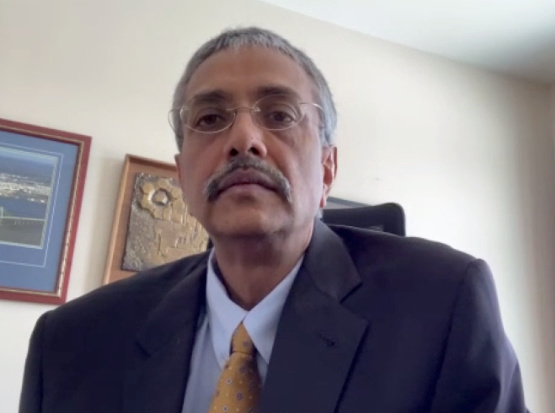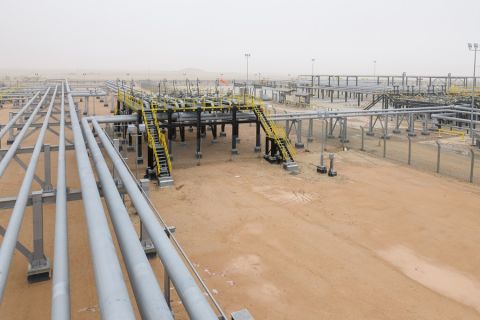
(Source: Chones/Shutterstock.com)
Exxon Mobil Corp. has stepped up its collaboration efforts, putting more emphasis on technology scalability, as the world’s appetite for cleaner forms of energy grows.
“There’s lots of solutions out there. When you start filtering solutions for scalability, that solutions set decreases very quickly, and that’s what we’re trying to shape,” Vijay Swarup, vice president of R&D for Exxon Mobil, said Feb. 24 during IPWeek.
Information from the International Energy Agency shows most of the energy industry’s needed technologies across various sectors are either not on track or need more efforts to meet sustainability goals. Seeking to advance technologies, oil and gas companies are diving deeper into areas needing a boost. Among these are carbon capture, emissions reductions, hydrogen and direct air capture.
Sustainability Focus
Earlier this month the Texas-based oil major created ExxonMobil Low Carbon Solutions. The new business, which aims to commercialize the company’s low-carbon technology portfolio, will initially focus on carbon capture and storage, a suite of technologies considered among the most critical to reaching net-zero emissions.
Exxon isn’t alone.
Chevron Corp. on Feb. 25 said it is allocating $300 million toward low-carbon technology investments as part of Future Energy Fund II. The company launched the first Future Energy Fund in 2018 to support carbon capture, emerging mobility and energy storage innovations. Chevron said the second fund will focus on “innovation in industrial decarbonization, emerging mobility, energy decentralization and the growing circular carbon economy.”
Other companies with similar ventures include Occidental Petroleum Co.’s Oxy Low Carbon Ventures as well as initiatives by European supermajors BP Plc and Royal Dutch Shell Plc. Equinor ASA also recently teamed with ENGIE on a hydrogen pilot project.
The sustainability efforts take place as traditional oil and gas companies transform into global energy powerhouses, adding investments in renewables. The focus has taken on greater importance amid climate change and push by investors aligned with Paris Accord climate goals to reduce emissions.
“Not one technology will take care of everything,” Swarup said.

“Companies like ours tend to focus on the harder to decarbonize areas where there is a wider technology gap that we think we can be part of the solution.”
For a HP/HT industry like energy, as Swarup described, this involves devising novel processes or rethinking existing ones. He briefly spoke about research using membranes for low-energy separations instead of distillation, which is a thermal separation process.
“Membrane can be done at lower temperatures with just a little bit of pressure. … It’s rethinking what we’re doing so that we can [lower] the energy intensity.”
Collaboration
Calling the energy giant a “technology company at the core,” Swarup said Exxon Mobil has been collaborating in parallel, working with national labs and partnering with innovative technology companies that don’t have a pathway to scale.
Key to the mission is collaboration, given the multitude of technologies and their capabilities.
Swarup illustrated how Exxon is involved in each phase of conventional technology development. This includes working with universities in the technology discovery phase and partnering with national labs in the development phase to initially deploying technologies with small, nimble companies and ultimately, taking over to deploy at scale.
To name a few, the company signed in 2019 a 10-year, $100 million partnership deal with the National Renewable Energy Laboratory. Exxon Mobil also teamed up with IBM Quantum—a global leader in quantum computing—to advance the technology’s use in developing the next generation of energy technologies and solutions.
“We do amazing things with supercomputers working at speeds that, quite frankly, I would have never dreamed of when I was a student several decades ago,” Swarup said. “But we still don’t have the ability to model materials the way we need to. And this super, really, really complex problem still takes too long on a traditional computer. Quantum can change that.”
The world is facing a “dual energy challenge,” Swarup said. Energy demand is being driven by improving living standards, intensifying the need to reduce emissions in sectors that include power, industry, transportation and residential. A suite of technologies will be needed, given different regions and sectors call for unique solutions, he added.
Scaling those technologies will take time.
However, working in parallel, collaborating and having line of sight to scale will enable more efficiency, effectiveness and higher probability of success to develop needed technologies, he said.
“The technology gap is going to require innovation and it’s going to require collaboration,” Swarup said. “If we change the way we innovate, change the way we collaborate, we think we greatly increase the chances of success to solve the dual challenge. That’s what we’re focused on and that’s what we look forward to continuing to do.”
Recommended Reading
Shipping Industry Urges UN to Protect Vessels After Iran Seizure
2024-04-19 - Merchant ships and seafarers are increasingly in peril at sea as attacks escalate in the Middle East.
Paisie: Crude Prices Rising Faster Than Expected
2024-04-19 - Supply cuts by OPEC+, tensions in Ukraine and Gaza drive the increases.
Report: Freeport LNG Hits Sixth Day of Dwindling Gas Consumption
2024-04-17 - With Freeport LNG operating at a fraction of its full capacity, natural gas futures have fallen following a short rally the week before.
Permian NatGas Hits 15-month Low as Negative Prices Linger
2024-04-16 - Prices at the Waha Hub in West Texas closed at negative $2.99/MMBtu on April 15, its lowest since December 2022.
BP Starts Oil Production at New Offshore Platform in Azerbaijan
2024-04-16 - Azeri Central East offshore platform is the seventh oil platform installed in the Azeri-Chirag-Gunashli field in the Caspian Sea.



